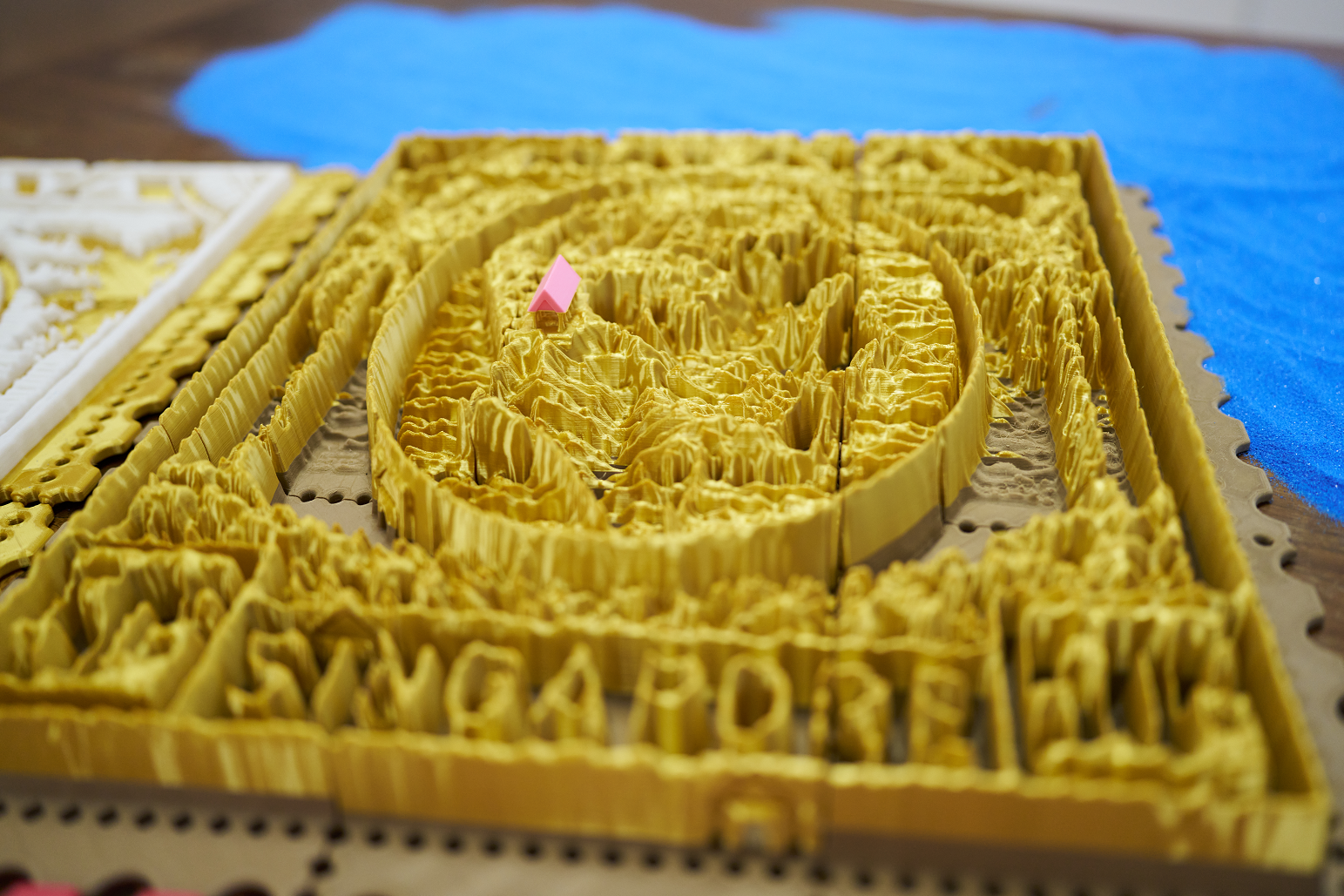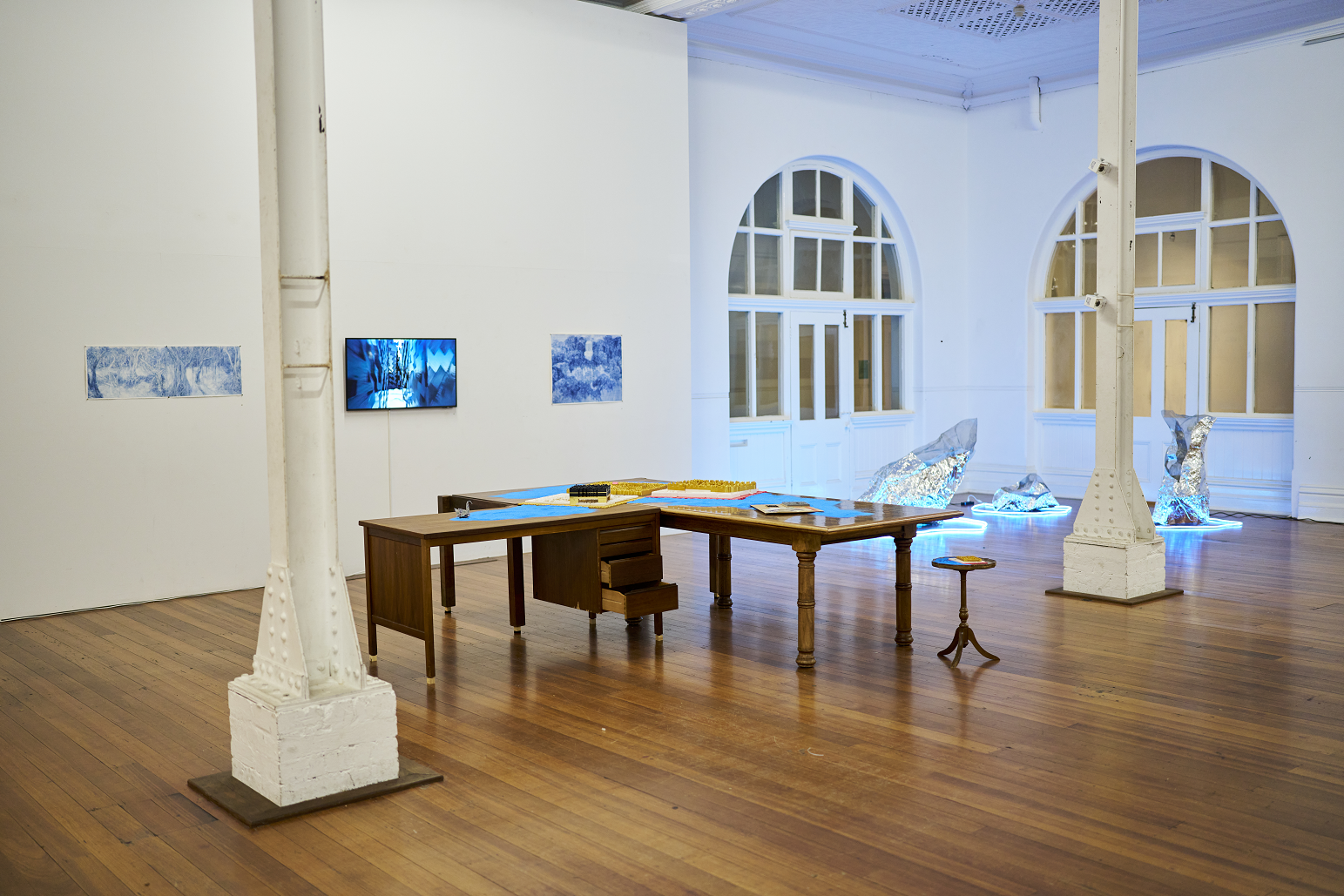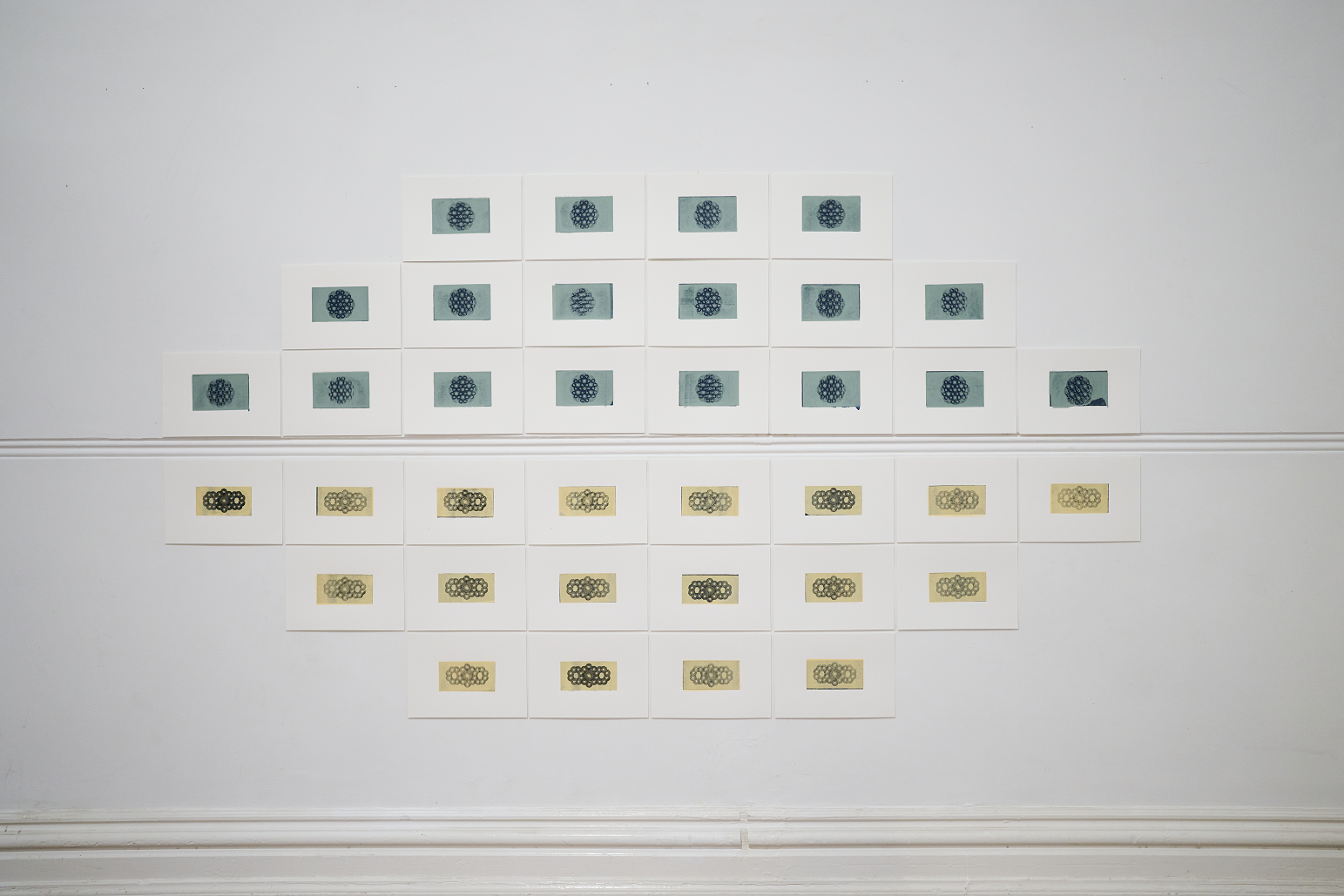


Paper
Trails Between Lion and Swan is equal parts exhibition
and art exchange. Held at the Old Customs House in Fremantle, the exhibition is
the second part of a two-stage project—one that has seen twelve artists (half
and half from Perth and Singapore), exhibit at Artsource and, previously, SCULPTURE 2052 in Singapore. The Fremantle rendition is an enjoyable foray into
the creative outputs of artists working under unusual circumstances. For the
Singaporean artists, part of the challenge was to find inventive ways to create
work. The subsequent work on display exhibits the kind of experimental
qualities one might hope from a group of artists pushing themselves into
challenging or unexpected cultural and creative terrain. At times, this can
manifest in elements that appear unresolved; suggestive of the wealth of
possibilities impossible to explore during such a short residency or exchange.
Yet, thinking through Paper Trails from
a pragmatic perspective, this group of artists—and particularly the 5 visiting
Singaporean artists (Ezzam Rahman was unable to attend in person)—were able to
achieve complex and thoughtful work, a testament to the artists and the
generative nature of the project. Artists and co-curators Harrison WaedSee, Desmond
Mah and Yeo Chee Kiong, have realised a residency program far more generative
than the typical artist exchange: by hosting the twelve together—both in
Singapore and then Perth—the project was realised in a meeting of minds
as well as work.
I had the pleasure of speaking with visiting artist and co-curator, Yeo Chee Kiong, about the project while he walked me through the exhibition. Extracts from the interview follows.
Yeo Chee Kiong: I think, at the very beginning, it was just Desmond [Mah], who was the one who approached the Singaporean gallerySCULPTURE 2052 to become involved. We wanted to figure out how to put out a show that introduced Perth artists to Singapore, and follow that by engaging the Singaporean artists and to bring them to Perth as well. So, it was a good idea that we wanted to explore and [...] we quickly formed a curatorial team, involving Harrison [Waed See] and myself, to work out a curatorial plan and apply for grants. So that’s how we got here!
In Singapore, SCULPTURE 2052 provided the venue for the first exhibition. So, in exchange, because most of the artists from Perth were Artsource members, it was fitting for the two venues to host each iteration of the exhibition—a good involvement and engagement between Perth and Singapore.
The biggest challenge was, at the very beginning, that the [Artsource gallery] space is really huge. So, when we received the images of the Old Customs House, compared with the Singaporean space, we thought ‘this is huge’. And so we needed to make sure that the six local artists’ work would work alongside that of the Singaporean artists. So we discussed how this might work—say, like, for Nhawful [Juma’at]’s work, he created that here. He brought over all the materials and created this set of sculptures within the last few days. And here [Yeo Chee Kiong points at his own work] all the domestic tables were sourced locally. So, we tried to find a way to bring the very, so called, “important elements” to Artsource, but, at the same time, to look for local materials to complete the work. Xin Xiao Chang’s work is another example—the work consists of tiny pieces of paper that were then put together during the past few days.
[Speaking on the first exhibition of the twelve artists at SCULPTURE 2052 in Singapore] Overall, the idea here is that everyone involved in the show has to contribute a piece of work and display it. And yes, have a drink at this end of the story [now the exhibition is open]! But to us, it is a bit different. We had six Perth artists in Singapore [for the first iteration of the exhibition], and most of them visiting Singapore first time in their life. So it was important to have a project [or structure]. We proposed a “map project”, which means that—other than the actual work artists were going to display—they needed to each bring a drawing. [We] called it a map project, but whatever it is, the idea was to keep in mind something that represented you. So from that prompt we put the twelve together. Everyone approached the prompt differently. This was most apparent when we first met face-to-face. After meeting in-person, everyone had the chance to get to know each other better, and we talked about the overall concept; how the work complemented each other in indirect ways. So, after this experience, we wished for the local artists, after they returned back to Perth, to have a new work based on the experiences they had in Singapore, and to put that new into this iteration of the show.
[So, each show generates something new for the next?]
That is really very important to us in this so-called exchange program. We are not just bringing something to Perth and being like “okay, I put it there and hope everyone just likes it or not…oh it’s okay”. What we really want is to encourage each artist to be a friend to one another, to understand each other better, the cultural background of each other. And, therefore, to find something interesting that can spark connection. Like, go beyond that very stereotypical understanding. And that is the point to travel overseas, and to meet the artists from the other countries.
Paper Trails Between Lion and Swan runs until Sunday, 23 June 2024 at Old Customs House.
Image credits:
1. Yeo Chee Kiong (2024), Overprint Land Series (detail of Series 2: Botanical Garden, 53 x 61cm), 3D Printing PLA filaments, VR animation, blue sand, domestic tables, stamps, printed papers, installed at Old Customs House, Dimensions variable.
2. Photograph of Paper Trails Between Lion and Swanexhibition featuring artworks by Di Cubitt [left], Yeo Chee Kiong [center], and Nhawfal Juma’at [right].
3. Terry Wee (2024), Straits dollar to Malaya dollar, Screen print on paper (variations), 30 x 21cm.
Photography by Liang Xu.
I had the pleasure of speaking with visiting artist and co-curator, Yeo Chee Kiong, about the project while he walked me through the exhibition. Extracts from the interview follows.
Yeo Chee Kiong: I think, at the very beginning, it was just Desmond [Mah], who was the one who approached the Singaporean gallerySCULPTURE 2052 to become involved. We wanted to figure out how to put out a show that introduced Perth artists to Singapore, and follow that by engaging the Singaporean artists and to bring them to Perth as well. So, it was a good idea that we wanted to explore and [...] we quickly formed a curatorial team, involving Harrison [Waed See] and myself, to work out a curatorial plan and apply for grants. So that’s how we got here!
In Singapore, SCULPTURE 2052 provided the venue for the first exhibition. So, in exchange, because most of the artists from Perth were Artsource members, it was fitting for the two venues to host each iteration of the exhibition—a good involvement and engagement between Perth and Singapore.
The biggest challenge was, at the very beginning, that the [Artsource gallery] space is really huge. So, when we received the images of the Old Customs House, compared with the Singaporean space, we thought ‘this is huge’. And so we needed to make sure that the six local artists’ work would work alongside that of the Singaporean artists. So we discussed how this might work—say, like, for Nhawful [Juma’at]’s work, he created that here. He brought over all the materials and created this set of sculptures within the last few days. And here [Yeo Chee Kiong points at his own work] all the domestic tables were sourced locally. So, we tried to find a way to bring the very, so called, “important elements” to Artsource, but, at the same time, to look for local materials to complete the work. Xin Xiao Chang’s work is another example—the work consists of tiny pieces of paper that were then put together during the past few days.
[Speaking on the first exhibition of the twelve artists at SCULPTURE 2052 in Singapore] Overall, the idea here is that everyone involved in the show has to contribute a piece of work and display it. And yes, have a drink at this end of the story [now the exhibition is open]! But to us, it is a bit different. We had six Perth artists in Singapore [for the first iteration of the exhibition], and most of them visiting Singapore first time in their life. So it was important to have a project [or structure]. We proposed a “map project”, which means that—other than the actual work artists were going to display—they needed to each bring a drawing. [We] called it a map project, but whatever it is, the idea was to keep in mind something that represented you. So from that prompt we put the twelve together. Everyone approached the prompt differently. This was most apparent when we first met face-to-face. After meeting in-person, everyone had the chance to get to know each other better, and we talked about the overall concept; how the work complemented each other in indirect ways. So, after this experience, we wished for the local artists, after they returned back to Perth, to have a new work based on the experiences they had in Singapore, and to put that new into this iteration of the show.
[So, each show generates something new for the next?]
That is really very important to us in this so-called exchange program. We are not just bringing something to Perth and being like “okay, I put it there and hope everyone just likes it or not…oh it’s okay”. What we really want is to encourage each artist to be a friend to one another, to understand each other better, the cultural background of each other. And, therefore, to find something interesting that can spark connection. Like, go beyond that very stereotypical understanding. And that is the point to travel overseas, and to meet the artists from the other countries.
Paper Trails Between Lion and Swan runs until Sunday, 23 June 2024 at Old Customs House.
Image credits:
1. Yeo Chee Kiong (2024), Overprint Land Series (detail of Series 2: Botanical Garden, 53 x 61cm), 3D Printing PLA filaments, VR animation, blue sand, domestic tables, stamps, printed papers, installed at Old Customs House, Dimensions variable.
2. Photograph of Paper Trails Between Lion and Swanexhibition featuring artworks by Di Cubitt [left], Yeo Chee Kiong [center], and Nhawfal Juma’at [right].
3. Terry Wee (2024), Straits dollar to Malaya dollar, Screen print on paper (variations), 30 x 21cm.
Photography by Liang Xu.
